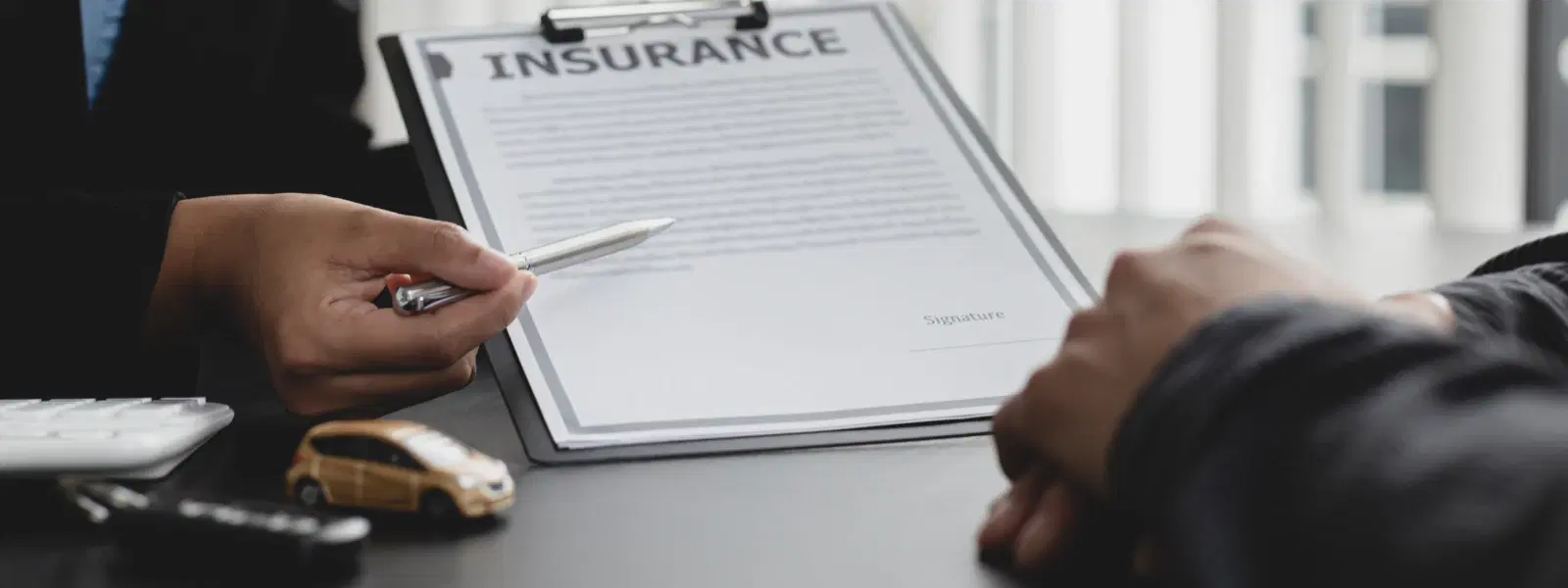
Insurance
•04 min read

Imagine facing an unexpected accident or a natural calamity that leaves your car damaged. In such moments, having protection specifically for repair costs can ease much of the burden. Own damage insurance is designed to cover the damages your vehicle suffers from events such as accidents, theft, fire, natural disasters, or man-made events like vandalism. It works as a standalone coverage that handles your vehicle’s repair or replacement costs while not covering liabilities towards third parties.
Own damage insurance is a type of insurance that provides financial protection when your insured vehicle experiences damage due to events like accidents, fire, theft, or natural calamities. This protection covers the repair or replacement of your vehicle as per the Insured Declared Value (IDV) set in the policy. It is important to note that this coverage does not extend to liabilities related to injuries or property damage caused to others during such incidents.
Without own damage insurance, you would be solely responsible for the repair costs that accumulate after any damage to your vehicle. This can create a significant financial strain. Policy holders benefit from a structured approach where repair costs are predicted and managed through insurance, offering them both financial relief and peace of mind. While third-party liability insurance is mandatory by law to cover damages to others, own damage insurance stands as a supplementary safeguard for your personal asset.
This insurance typically covers a range of scenarios, including:
Accidental damage to the vehicle
Theft or burglary incidents
Damages due to natural disasters such as floods and storms
Losses caused by man-made events like riots or vandalism
The coverage provides a financial backup that helps in managing repair costs, reducing out-of-pocket expenses during emergencies. This layer of protection offers vehicle owners a sense of security, ensuring that unexpected repair expenses do not disrupt their financial stability. Additionally, many policies offer the option to customize coverage with various add-ons that align with specific needs.
Several add-on covers are available to boost the standard protection:

Zero Depreciation Cover: Ensures that no depreciation is deducted during the claim settlement for replaced parts.
Engine Protection Cover: Compensates for engine failures due to issues like water ingress.
Consumables Cover: Helps pay for smaller parts such as nuts, bolts, and lubricants.
Roadside Assistance Cover: Provides emergency services like towing and minor repairs.
Own damage insurance is available not only for cars but also for two-wheelers. The principles remain the same, ensuring that whether you own a car or a two-wheeler, your vehicle is shielded from unforeseen physical damages. This makes the policy adaptable to various types of vehicles, addressing specific risks for each category.
Many vehicle owners often maintain a separate policy for liabilities towards third parties. Instead of overlapping, own damage insurance works complementary to such mandated coverage. Moreover, other add-ons like zero depreciation enhance the basic own damage policy by protecting the vehicle with minimal depreciation deductions during claims. Renewing the policy on time is crucial to maintaining uninterrupted coverage and safeguarding your investment in your vehicle.
The premium for own damage insurance is influenced by various factors. Some of these include the age of your vehicle, its make and model, and the insured declared value (IDV). Geographical location also plays a significant role, as areas prone to certain natural events or high incidences of accidents may lead to higher premiums. Additionally, a history of frequent claims can increase the cost, while a clean driving record can help secure a No Claim Bonus (NCB) that reduces premiums.
There are practical steps to take in order to manage and possibly reduce your premium costs. Some of these include opting for a higher deductible, which lowers the premium burden, and maintaining a good driving record to benefit from the No Claim Bonus. It is also helpful to review and compare policy features periodically to ensure you are getting a competitive rate and adequate coverage for your needs.
When selecting an own damage insurance policy, you should first assess your vehicle's risk exposure and coverage needs. Review the policy documents to understand the specific inclusions and exclusions. Considering add-ons that offer extra protection can be beneficial if they align with your vehicle's requirements and your budget.

Timely renewal of your insurance policy is important to avoid any gaps in coverage. Many insurers provide simplified online renewal options that make the process efficient. During renewal, it is advisable to reassess your vehicle's current value, check if there are new add-ons or cover modifications available, and update the policy accordingly.
It provides coverage for repairs or replacement of the insured vehicle if damaged due to accidents, theft, fire, natural disasters, or man-made events.
Yes, own damage insurance is available for both cars and two-wheelers, with coverage adapted to each vehicle type.
The premium is calculated based on factors such as the vehicle's age, model, IDV, geographical area, and claim history.
No, zero depreciation cover is typically offered as an add-on, which helps avoid depreciation deductions during claim settlements.
During renewal, re-evaluate your vehicle's current condition and value, review available add-ons, and ensure continuous coverage to avoid any gap in protection.
Own damage insurance is an essential component of vehicle ownership, serving as a critical financial safeguard against the unexpected. By covering repair costs and minimizing financial disruptions after an unfortunate event, this insurance helps maintain peace of mind for every vehicle owner. Understanding your insurance options, what the coverage encompasses, and how to manage premiums can empower you to make informed decisions about protecting your valuable asset. At Tata NeuPolicy, we are committed to providing clear and reliable vehicle insurance solutions to safeguard your investment. Always ensure that your policy is renewed on time and that you are aware of the full details provided in your policy documents.